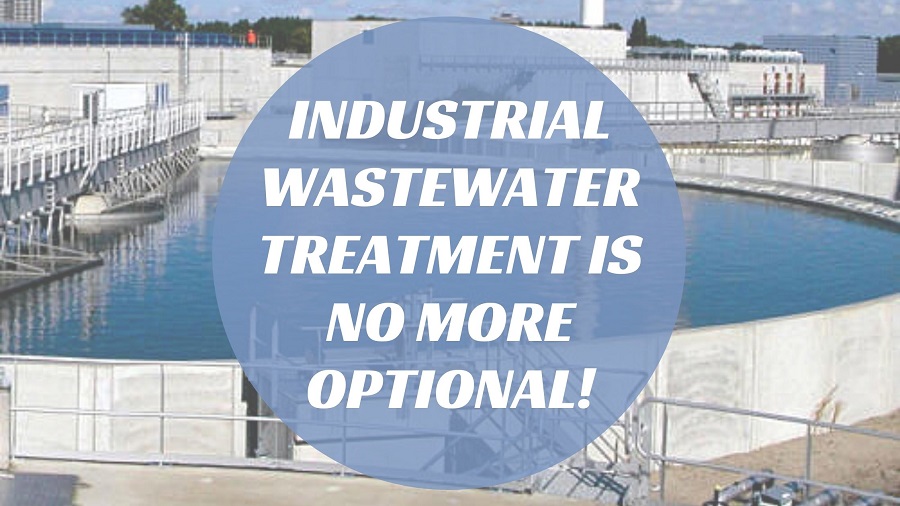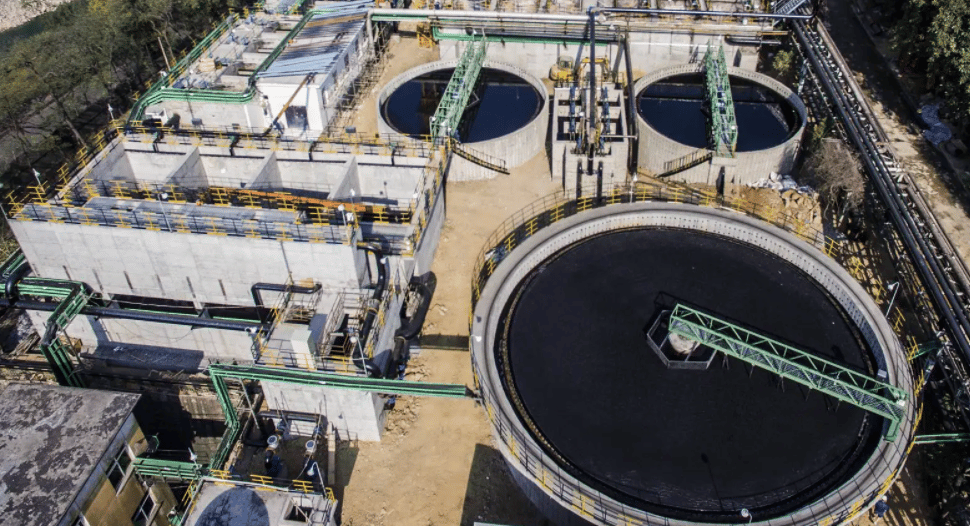Industrial Waste Water Treatment-- Efficient Waste Monitoring for Manufacturing Facilities
Industrial Waste Water Treatment-- Efficient Waste Monitoring for Manufacturing Facilities
Blog Article
Advancements and Developments in Hazardous Waste Water Therapy Technologies
The landscape of industrial wastewater treatment is undertaking a transformative shift, driven by innovations that boost both performance and sustainability. Arising innovations, such as membrane bioreactors and microbial gas cells, are redefining impurity removal procedures while adding to energy generation. Additionally, resource healing techniques are getting traction, straightening with round economic climate principles. As regulative requirements advance, the assimilation of AI and artificial intelligence into wastewater management systems assures to improve procedures and ensure compliance. The complete effects of these developments elevate important questions about their scalability and lasting influence on market methods.
Summary of Drainage Therapy Technologies
Wastewater treatment technologies include a variety of approaches designed to eliminate contaminants from industrial effluents prior to their launch right into the environment. These innovations are essential for keeping eco-friendly balance and making sure conformity with environmental policies. The primary groups of wastewater therapy include physical, chemical, and biological approaches, each serving distinctive functions based upon the nature of the impurities present.

Biological treatment approaches use bacteria to break down natural matter, making them especially reliable for organic-rich effluents. Strategies like turned on sludge and biofilm reactors harness the all-natural deterioration abilities of microorganisms, leading to significant reductions in biochemical oxygen need (FIGURE)
Advanced Filtration Techniques
Advanced purification strategies represent a vital advancement in the world of commercial wastewater treatment, boosting the performance of pollutant elimination procedures. Industrial Waste Water Treatment. These approaches incorporate a variety of technologies, consisting of microfiltration, ultrafiltration, nanofiltration, and turn around osmosis, which offer consecutive barriers for various fragment sizes and chemical structures
Microfiltration and ultrafiltration use membrane layer systems to remove put on hold solids, bacteria, and bigger natural molecules, boosting the high quality of effluent before more treatment. Nanofiltration links the space in between ultrafiltration and reverse osmosis, properly getting rid of divalent ions and natural substances, thus decreasing the load on downstream processes.
Reverse osmosis uses the highest degree of filtration by permitting just water and small molecules to travel through its semi-permeable membranes, making it perfect for reclaiming top quality water from commercial effluents. Current improvements in membrane layer technology, including the development of even more long lasting and fouling-resistant products, have actually dramatically boosted functional efficiency and reduced expenses.
Including these sophisticated purification techniques not just boosts the total treatment process however also adds to sustainability initiatives by allowing water reuse and resource recuperation in commercial settings. (Industrial Waste Water Treatment)
Biological Treatment Advancements

Furthermore, the growth of crafted organic systems, such as membrane bioreactors (MBRs), incorporates organic treatment with sophisticated membrane filtration. This assimilation permits for greater effluent quality and minimized footprint, making it appropriate for space-constrained industrial centers. Developments in genetically crafted microbes have actually also arised, enhancing the biodegradation of specific contaminants, such as pharmaceuticals and hefty metals, that are commonly challenging to get rid of.
Additionally, the application of bioaugmentation strategies, where helpful germs are presented to boost the existing organic therapy procedures, has actually revealed encouraging results in enhancing treatment efficiency. These advancements collectively symbolize a fad in the direction of even more lasting and reliable biological treatment methodologies that can adapt to the progressing intricacies of commercial Homepage wastewater streams. As sectors continue to focus on environmental compliance, these organic innovations will play an essential role in wastewater management.

Source Recovery Techniques
In industrial settings, the combination of resource recuperation techniques has become increasingly essential for boosting sustainability and minimizing waste. These approaches concentrate on drawing out useful products and energy from wastewater streams, consequently transforming prospective pollutants into reusable resources.
One prominent strategy is vitamins and mineral recovery, where nitrogen and phosphorus, commonly present over in wastewater, are recorded and exchanged plant foods. This not only reduces environmental influences however additionally provides a round economic situation remedy for agricultural applications. Furthermore, modern technologies such as anaerobic food digestion permit the conversion of natural waste into biogas, a renewable resource resource that can counter nonrenewable fuel source you can try here usage in industrial procedures.
Furthermore, advanced purification and membrane layer technologies help with the healing of commercial byproducts such as salts and steels. These recovered products can be rehabilitated into manufacturing procedures, decreasing the demand for virgin resources.
Future Patterns in Waste Water Administration
As markets increasingly prioritize sustainability, the future of wastewater monitoring is readied to go through significant makeovers. Technical improvements, such as expert system and device knowing, will make it possible for a lot more effective surveillance and management of wastewater systems. These modern technologies can forecast upkeep requirements, optimize therapy procedures, and improve decision-making, ultimately lowering operational costs and environmental effect.
Moreover, the assimilation of circular top article economy concepts will play a critical function in wastewater monitoring. Industries are expected to change towards systems that not just treat wastewater but additionally recuperate important sources, such as nutrients, water, and energy. This change will certainly reduce waste and advertise the reuse of materials, straightening with global sustainability goals.
Arising therapy techniques, such as membrane layer bioreactors and advanced oxidation processes, will even more enhance the efficiency of wastewater treatment, permitting better effluents appropriate for reuse. In addition, regulative structures are likely to progress, stressing more stringent requirements for wastewater discharge and motivating sectors to take on cutting-edge therapy services.
Verdict
In final thought, the advancement of commercial wastewater therapy modern technologies demonstrates a significant shift in the direction of improved efficiency and sustainability (Industrial Waste Water Treatment). Technologies in advanced purification methods, organic treatments, and source recovery techniques highlight the sector's dedication to environmental stewardship.
The landscape of industrial wastewater therapy is undertaking a transformative shift, driven by innovations that enhance both performance and sustainability.Wastewater therapy modern technologies encompass a variety of approaches made to remove pollutants from industrial effluents before their release into the environment.Utilizing the power of biological procedures has led to considerable developments in the treatment of industrial wastewater.Furthermore, the application of bioaugmentation methods, where valuable microorganisms are introduced to enhance the existing biological treatment procedures, has revealed appealing outcomes in enhancing treatment efficiency. These developments jointly symbolize a pattern towards more lasting and reliable biological therapy methodologies that can adapt to the developing complexities of commercial wastewater streams.
Report this page